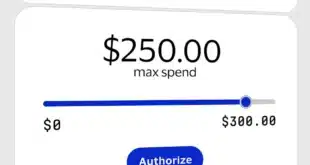Discover Financial Services is about to team up with Google Inc. to bring the Google Wallet to the physical point of sale with a Discover-branded plastic card, according to the latest rumor sweeping Silicon Valley. Discover recently began issuing cards for PayPal Inc., so if the Google rumor proves true, the deal would make Discover the network partner of two of the most powerful players in mobile payments.
The possible Google-Discover tie-up was first reported late last week by the online newsletter Android Police, which covers Google’s Android mobile operating system. Spokespersons for Mountain View, Calif.-based Google and Riverwoods, Ill.-based Discover refused to comment on the report to Digital Transactions News.
A card for POS acceptance, however, would mark the breakthrough that Osama Bedier, vice president of Google Wallet and payments, indicated Oct. 22 would be coming in the next month when he spoke of “the 2.0 version” of the product at the Money 2020 conference in Las Vegas.
Google Wallet started out as a contactless payments system and forum for merchants to send advertising, loyalty promotions, and electronic coupons to consumers using near-field communication (NFC) technology. The dearth of NFC handsets and the small number of U.S. merchants, now an estimated 240,000, that accept contactless payments limited the wallet’s growth. Google in August solved part of its problem by introducing what Bedier called Version 1.5 of Google Wallet, which retained NFC for identification of the mobile device to the merchant terminal, but moved payment credentials from a secure element inside the phone to Google servers in a so-called cloud configuration.
That enabled consumers to register general-purpose credit and debit cards from any issuer with their Google Wallets, not just cards from the few issuers with which Google had contracts. The first version of Google Wallet relied on a Google virtual prepaid card or a virtual Citibank MasterCard embedded in the secure element.
Version 1.5 didn’t do much to expand merchant acceptance in stores, however. The rumored magnetic-stripe card would clear that high POS hurdle because about 7 million U.S. merchant locations accept Discover.
The new Google Wallet card would link to the cards the user had saved in the wallet, with a POS purchase reportedly charged to the default card the user had selected. With such a card, the user apparently would earn loyalty points or coupons even if the merchant couldn’t accept Google Wallet payments that involve the buyer waving or tapping an Android smart phone at a contactless reader.
“I’d say this was fairly inevitable,” says mobile-payments researcher Rick Oglesby, a senior analyst at Boston-based Aite Group LLC. “Google has been working hard to gain consumer adoption of the wallet. Their value proposition is premised on advertising, which requires consumer participation. By building a base of consumer participants, they can strengthen the advertising value proposition to prospect merchants and get them to sign on.”
Payments consultant Steve Mott of Stamford, Conn.-based BetterBuyDesign adds by e-mail that, “The shortest distance to POS acceptance is partnering with an acceptance network that has broad merchant distribution. Discover has that–basically on a par with Visa/MasterCard acceptance levels–plus has made it known that they will consider private-label credit and debit use of their existing rails. That makes them an ideal platform for innovators to tap in order to introduce mobile transacting to a normally recalcitrant POS infrastructure.”
Google’s card may prove to be only a temporary measure that will help the search-engine giant make the transition into a world in which consumers commonly use smart phones as payment devices. The real value for Google, Oglesby says, is the money it can earn from enabling merchants to redeem offers. Thus, he sees the card as helping Google Wallet gain more consumer usage, which in turn would bolster Google’s case for merchants to get NFC-enabled contactless terminals that interact with smart phones and can perform offer redemptions.
“There’s no way to do a redemption of offers at this point in time through a card transaction,” he says.
Then there is the interchange question. Google Wallet as reconfigured in August features a virtual prepaid card embedded in the phone. For a physical purchase, Google as the issuer of the prepaid card in the first part of the sale pays the merchant and collects card-present interchange rates. In the second part, Google acts as the merchant, charging the card designated by the consumer and paying higher card-not-present rates to the issuer. That means Google loses the margin, and that probably won’t change with the new card.
“The card does little to nothing as far as gaining revenue for Google, so this is clearly about building up critical mass on the consumer side to become more relevant to merchants in pitching their marketing value propositions,” Oglesby says.
In addition to the Discover card companion, the upgraded Google Wallet will include other new features, including the ability to load transit cards, according to Android Police.





